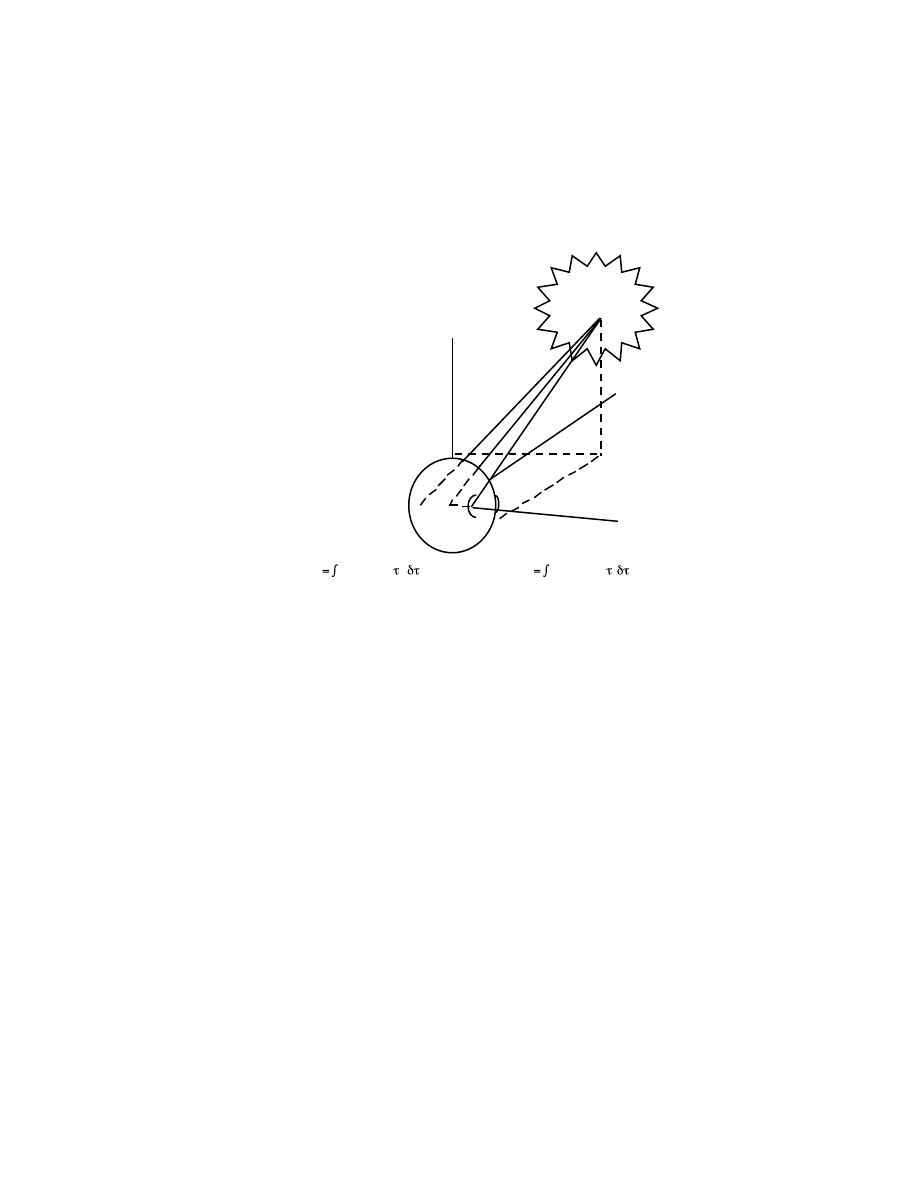ВУЗ: Казахская Национальная Академия Искусств им. Т. Жургенова
Категория: Учебное пособие
Дисциплина: Не указана
Добавлен: 03.02.2019
Просмотров: 12356
Скачиваний: 6

H
HDCD: High Definition-Compatible CD. A trademark dithering process by Pacific Mi-
crosonics. The “HDCD process effectively cancels the additive distortions and simultane-
ously provides additional data to reduce the subtractive distortions” and is compatible with
existing consumer digital playback equipment, claiming that there is a clear improvement in
the fidelity of the conventional CD. The process works by converting an analog signal into a
digital signal with a word length of “longer than 16 bits” and at a sampling frequency of
“greater than 100kHz.” These data can then be encoded into the standard CD format, or used
with 20- or 24-bit recording/editing hardware/software. When used with an HDCD de-
coder, the reconstructed signal is output at the appropriate > 16-bit, > 44.1kHz format.
HDTV: High Definition TeleVision. A term designating any television system using many
more than the standard number of lines per frame specified in the NTSC, PAL, or SECAM
systems. Experimental HDTV systems have been developed to provide high-resolution
computer animation for motion pictures, flight simulators, etc., but are unlikely to be used for
broadcast any time soon due to their inherent incompatibility with existing broadcast stan-
dards. The HDTV standard includes 5.1 audio, using AC-3 encoding.
head: (1) On a tape recorder, an electromagnetic transducer that (i) converts electrical energy
in the signal into a magnetic field that induces magnetization in the tape, or (ii) produces an
electrical signal in response to the varying remanent magnetism stored along a passing length
of tape. See erase head, playback head, record head, sync head. (2) In general, the transducing
mechanism used in recording or playing back signals on various media, e.g., the cutting head
of a record mastering lathe, the optical head of a motion picture projector, etc.
head gap: See gap.
head losses: Limitations in the frequency response of the signal a tape head can transfer to or
read from tape due to its inherent design or construction.
headphone box: See cue box.
headphone mix: See cue mix.
headroom: The amount of additional signal above the nominal input level that can be sent to
a module before clipping distortion occurs. On a digital tape, input levels are set very low, -
15VU to -12VU, to allow adequate headroom for occasional input peaks that might exceed -
12VU. See dynamic headroom, dynamic range, overs.
head shield: A metal shield installed around as much of the playback head as is possible, in
order to minimize distortion due to EMI.
heads-out: A tape recording which has been rewound and is ready to play. It is generally
considered best for long-term storage to leave recordings tails-out for minimum print-through.
head stack: The assembly of tape heads in a magnetic recorder. The head stack normally
consists of an erase head, a record head, and a playback head. Also called a head block.

H
helical scan: A type of videotape, data, or audio recorder in which the tape is wrapped
around a large rotating drum, on which the actual record and playback heads are mounted.
Since the heads rotate quickly and write parallel tracks at a very small angle with respect to
the tape path, the signal written on the tape is may times the actual length of the tape itself.
Thus, helical scan recording offers very high resolution at low tape speeds. Almost all con-
sumer and professional videotape formats employ the helical scan principle, largely replac-
ing the quadruplex recorder.
Helmholz resonator: A structure used in loudspeaker systems which is designed to resonate at
a particular frequency. Because of the particular design of the resonator, the sound at the
tuned frequency is dampened, and two bands, one each of higher and lower frequency, are
produced, extending the bass response of the loudspeaker.
Henry: (1) See Jecklin disk. (2) A measurement for inductance.
Hertz (Hz): The unit measurement of frequency which equals one cycle per second, named
after German physicist H.R. Hertz. The frequency range of human hearing is from about
20Hz-20kHz.
heterodyne: To mix two frequencies together producing the sum and difference of the two
input frequencies; any information contained on either original frequency is continued in the
sum and difference frequencies. Heterodynes are used as the basic design for all AM, FM,
amateur radio, CB, TV, radar, and satellite systems. See amplitude modulation.
HFS: Hierarchical File System. A Mac-specific logical file format for CDs. CDs written in
HFS cannot be read on PCs. Compare with ISO 9660.
high-fidelity: Refers to the reproduction of sound with little or no distortion. At least 15kHz
of audio bandwidth is required for stereo high-fidelity.
hi-fi video sound: The result of encoding the stereo soundtracks input to hi-fi type VHS or
Beta format videotape recorders on an frequency modulated carrier wave. This information is
recorded along with picture data via the video record heads. Reproduction of hi-fi sound
approaches digital quality audio.
high band: A type of video system in which the picture information is encoded on a much
higher carrier frequency than early color video systems; the broadcast standard currently in
use.
high-frequency compression: See HX/HX pro.
high-output low-noise (HOLN): A type of magnetic recording tape with very high sensitivity
to applied magnetic fields, and with a very high S/N ratio, commonly used in professional
audio applications.
highpass filter: A filter that attenuates the frequencies below its rolloff frequency.
hiss: Audio noise that sounds like air escaping from a small aperture. See Barkhausen effect.
hit point: See cue.
hold time: An envelope parameter that specifies how long the attack segment of an envelope
is to be held at full level.

H
hole-in-the-middle: An undesirable effect due to an extreme angle used with a coincident pair
where the stereo image is all left and right, with very little sound in the center. Or, a similar
phenomenon created by a surround system where the loudspeakers are too far apart to de-
liver balanced sound adequately to all seats in a theater.
hook: In popular music, the short melodic idea designed to be instantly memorable. It is of-
ten used for the chorus of a song, as well as for a fade.
horn: A type of loudspeaker enclosure named for its characteristic shape, with the speaker
itself mounted in the narrow end of its tapered interior surface. Because the sound waves
emanating from the speaker itself are internally enlarged before they exit from the larger end
of the tapered surface, horn enclosures are highly efficient. Also, any horn-shaped device
placed in front of a speaker to disperse sound.
horn tweeter: A high-frequency loudspeaker which has a horn-shaped flare fixed to the front
in order to increase acoustic efficiency and better control the directivity.
hose: Slang term for an audio cable, e.g., a microphone cable or a snake.
hot: In a balanced line system, the conductor which carries the in-phase component of a sig-
nal. For example, pin 2 of an XLR connector.
hot hole: In film, slang for the projector gate itself, where the picture start mark is threaded
up at the beginning of a session.
house mix: An output on a sound reinforcement control console that is used to feed the power
amplifiers for the loudspeakers in the venue, usually highly equalized to correct for house
modes.
house mode: The unique acoustic profile of a particular performance or recording venue. It
is necessary to know the reverberation patterns within the space so that microphones, speak-
ers, acoustic damping, etc. can be appropriately placed to produce or simulate the spatial and
ambience effects desired, or to correct for room modes.
house sync: Also called black-burst.
HRIR: Head-Related Impulse Response. See HRTF.

H
HRTF: Head-Related Transfer Function. A function used to find the sound pressure that an
audio source produces at the ear-drum. This is described by the impulse response from the
source to the ear drum, called the Head-Related Impulse Response (HRIR), and its Fourier
transform is the HRTF. The HRTF captures all of the physical cues to the source localization;
once the HRTF for the left and right ears is known, accurate binaural signals may be synthe-
sized from a monaural source.
Head-Related Transfer Function
Sound Source
x
z
y
X
L
(t)
h
L
(t)
h
R
(t)
X
R
(t)
X(t)
xL(t)
hL(t) x(t- )
xR(t)
hR(t) x(t- )
HSS: HyperSonic Sound.™ A loudspeaker technology developed by American Technology
Corporation. This design produces audio by mixing an ultrasonic carrier with audio side-
bands, in much the same manner of heterodyning. The mixing takes place in the air, relying
on the nonlinearity of the atmosphere. The resultant sound is actually not generated at the
transducer, but all along a projected column of ultrasonically vibrated air in front of the trans-
ducer as a conversion by-product of the interaction of the ultrasonic waves. Inaudible ultra-
sound energy is projected, which in turn emerges as AF sound from adjacent reflective sur-
faces. An acoustical sound wave is created in the air molecules by down-converting ultra-
sonic energy into the AF. This process supposedly is free of the problems of conventional
speaker voice coils, cones, crossover networks, or enclosures. In addition, because sound is gen-
erated along the entire length of the projected column, there is minimal (1dB) amplitude loss
as a function of distance from the transducer, across an average-sized room.
hub: The cylindrical plastic or metal center of a tape reel to which the tape is attached and
around which it is wound.
hum: Audio noise that has a steady low-frequency pitch, typically caused by the effects of
induction of nearby AC lines or leakage of AC line frequency into an amplifier’s signal cir-
cuits, usually at 60Hz or 120Hz.
humanize: To introduce slight, random variations to the timing, velocity, duration and pos-
sibly other parameters of a track to make quantized tracks sound more natural. See percentage
quantization.

H
hum switch: A switch found on some audio equipment, such as amplifiers for musical in-
struments, which reverses the neutral and hot leads of the power cord in order to reduce
hum. The ground lead is unaffected.
HX/HX Pro: Headroom eXtension. A special circuit developed by Dolby Labs to reduce the
tendency in cassette recorders toward self-erasure. In magnetic tape recording, loud, high fre-
quencies in the signal look like bias to the tape which will tend to erase the signal as it is being
recorded. The effect is called high frequency compression. The HX Pro system senses the level
of high frequencies and reduces the level of bias dynamically.
hybrid amplifier: An amplifier that uses a combination of transistors and tubes, supposedly
combining the best characteristics of each.
hypercardioid microphone: The narrowest of the unidirectional patterns, the hypercardioid is
a variation on the cardioid microphone pick-up pattern which is most sensitive at the front
and sides, while rejecting sounds entering 110°-250˚ to the rear, with a small lobe of sensitiv-
ity at 180˚ to the rear. The pick-up pattern of a hypercardioid is narrower than that of a su-
percardioid and is somewhat similar to that of a figure-eight mic, but the response is asymmet-
rical in that the hypercardioid has greater sensitivity to sound arriving at the front of the cap-
sule than to sound arriving a the rear. See acceptance angle. Also called a cottage loaf mic in the
UK, for reasons related to bread.
hyperinstrument: An instrument which has had its sound-producing capability enhanced
electronically.
hysteresis: In magnetic tape recording, the hysteresis inherent in the process of magnetizing
the tape represents a large nonlinearity, and this causes harmonic distortion. The use of bias in
the recording process reduces the effect of the hysteresis, and hence, reduces the distortion.
Compare with Barkhausen effect.
hysteresis loop: The graph of applied magnetic force vs. remanent magnetism. One measure
of a specific recording tape’s performance.